A security officer with an M3M machine gun on the rear ramp of a CH-53 transport helicopter monitors the area during exercise Griffin Lightning 2025 in Lithuania ©Bundeswehr/Bill Drechsler
The geopolitical chessboard is shifting, and Europe is scrambling to adjust. With Donald Trump’s return to the White House, European leaders now confront an inescapable reality: they can no longer rely on America’s military umbrella as they once did.
President Trump’s notorious scepticism towards NATO and his transactional view of alliances have sent shock waves through European capitals, from Paris to Warsaw. But it’s Germany, of all places, that’s emerging as the unlikely spearhead of Europe’s defence renaissance.
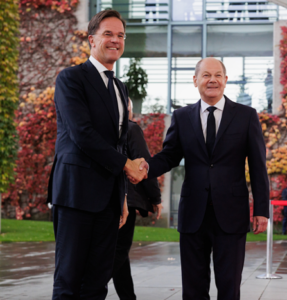
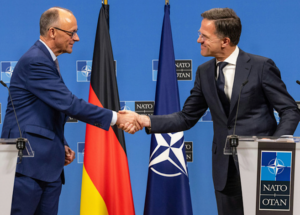
For decades, Germany’s approach to military spending could easily have been described as relaxed. Despite being Europe’s economic powerhouse, it consistently fell short of NATO’s 2% GDP defence spending target, often drawing muted anger from Washington. The Bundeswehr, Germany’s armed forces, became a symbol of underfunded potential, plagued by equipment shortages, bureaucratic obstacles, and a political establishment over-cautious about any sort of militarisation. But the war in Ukraine, coupled with Trump’s “America First” rhetoric, has now prompted Berlin, as well as other major European nations, to reassess their strategic positions.
Former Chancellor Olaf Scholz’s 2022 declaration of a Zeitenwende – a historic turning point – following Russia’s full-scale invasion of Ukraine wasn’t just empty rhetoric. Germany has since pledged to hit the 2% NATO target consistently, a major departure from its post-Cold War complacency. In fact, Olaf Scholz started a €100 billion fund to modernise the military, but progress got slowed down by red tape.
However, with the ascension of Friedrich Merz to the chancellorship, the political winds in Germany have shifted dramatically, marking a sharp rightward turn in the country’s defence and fiscal policies. Merz’s government – an alliance of his conservative Christian Democratic Union and the centre-left Social Democrats – has moved rapidly to initiate the most radical overhaul of German military spending since the Cold War.
In a historic vote, the Bundestag approved a colossal defence budget, one so vast that it has been exempted from the Schuldenbremse – Germany’s normally very strict debt-limiting mechanism. Germany’s defence spending has gone up and down over the years—it hit 4.9% of GDP in 1963 but dropped all the way to 1.1% by 2005. It wasn’t until 2024 that Germany finally met NATO’s 2% target.
Now, Chancellor Merz wants to go even higher to keep the country safe.
So, the message is clear: Berlin is no longer playing around when it comes to defence. If spending reaches 3.5% of GDP in the next ten years, Germany could pour up to €600 billion into its military – the largest defence investment in German history.
| BREAKING THE BANK FOR SECURITY
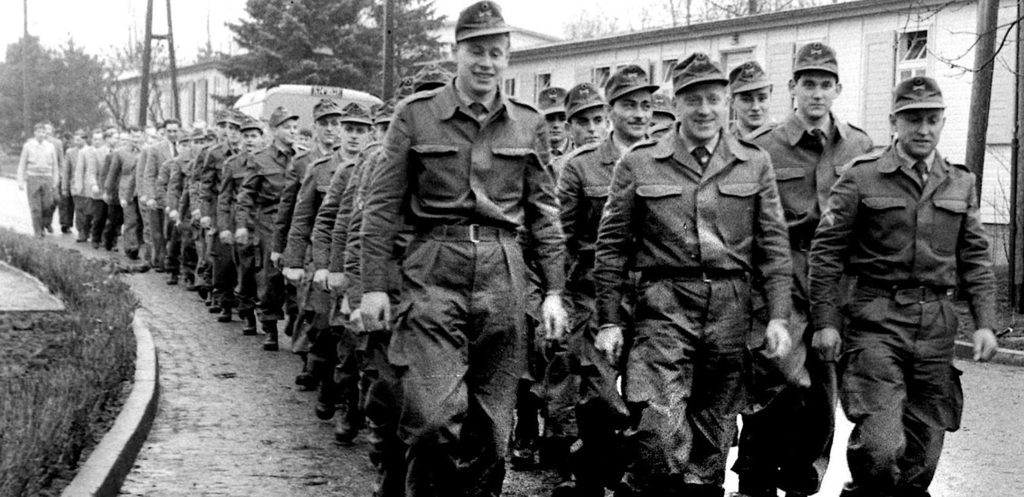
The Bundeswehr has come a long way since its founding in 1955. Born in the tense early years of the Cold War, Germany’s post-war military was built from the ground up as a purely defensive force, tightly integrated into NATO’s strategy of deterrence. Back then, the focus was straightforward: heavy conventional forces, tanks, and artillery – everything needed to hold the line against the Eastern Bloc’s massive armies. Even in those early days, technology played a key role, shaping how the Bundeswehr trained, fought, and planned for the unthinkable.
But when the Berlin Wall fell and the Cold War faded, the Bundeswehr faced an identity crisis. No longer staring down Soviet tank divisions, Germany’s military had to reinvent itself for a new era of unpredictable crises. Peacekeeping, disaster relief, and far-flung stabilisation missions became the new normal – from the Balkans to the Hindu Kush. These operations exposed glaring gaps: bulky Cold War structures were too slow, and equipment wasn’t built for desert dust or guerrilla warfare. Lessons from Kosovo and Afghanistan forced painful but necessary changes—smaller units, faster deployments, and a hard look at outdated gear.
For years, Germany’s military was the subject of various jokes within NATO circles – chronically underfunded, short on personnel, and making headlines for all the wrong reasons. Defective helicopters and even shortages of basic kit. But under Merz, that’s all changing with the introduction of the new defence budget. But what’s really remarkable is that this spending completely circumvents traditional fiscal constraints.
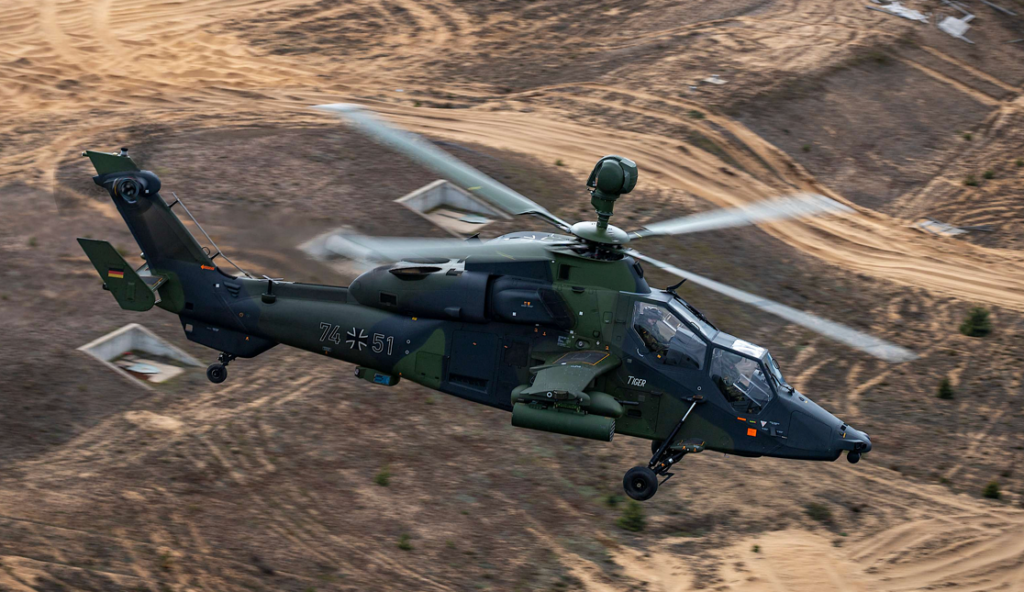
Just a few years back, this would have been political suicide. Germany’s famous constitutional law designed to keep budgets strictly in check has been quietly side-stepped when it comes to defence. No fuss, no drawn-out legal battles. Just a simple, sobering message: when it comes to security, austerity isn’t sacred any longer.
Friedrich Merz, a proper Atlanticist through and through, with longstanding ties to German industry, has positioned this unprecedented defence expenditure as both a geopolitical imperative and an economic opportunity. ‘We can no longer afford naivety,’ he declared during a recent Bundestag address. ‘The world order has shifted, and Germany must adapt accordingly.’
His message has resonated strongly within conservative circles and drawn cautious support from some sections of the political centre. However, the policy faces fierce opposition from the Greens and Left Party, who condemn it as a dangerous escalation towards militarisation that could initiate a destabilising arms race. Even within Merz’s Christian Democratic Union, fiscal conservatives have voiced concerns over what they perceive as an erosion of Germany’s long-standing commitment to budgetary restraint. While these dissenters have reluctantly accepted the situation for now, their unease points to the tensions within the governing coalition.
The scale of expenditure is quite extraordinary. Billions upon billions are being committed to modernising the Bundeswehr’s antiquated inventory – its ageing Leopard tanks, its obsolescent naval vessels, its fighter fleets operating well beyond their intended service life. Even traditionally neglected domains such as cyber-warfare and unmanned systems are now receiving substantial investment. Most remarkable of all, Germany has begun openly contemplating the development of an independent nuclear deterrent – a proposition that would have been politically untenable as recently as ten years ago.

Yet financial commitment alone cannot remedy the Bundeswehr’s systemic challenges. The military establishment remains plagued by entrenched structural deficiencies: a procurement apparatus notorious for its very slow pace, critical shortfalls in technical personnel, and a bureaucratic system that impedes rapid innovation. Friedrich Merz has pledged to streamline these processes, including through proposed legislation styled as a “Defence Efficiency Act” to accelerate acquisitions. However, military experts and analysts maintain the spending will achieve limited impact without parallel efforts to remedy the defence establishment’s systemic dysfunction.
In his first speech at the Bundestag, Chancellor Merz reiterated the role of the Bundeswehr as the tip of Europe’s spear: ‘In the future, the German government will provide all the financial resources the Bundeswehr needs to become the strongest conventional army in Europe. This is only fitting for Europe’s most populous and economically most powerful country. Our friends and partners expect nothing less from us; in fact, they’re demanding it.’
| OVERHAUL, FROM TOP TO BOTTOM
After decades of underinvestment, Germany aims to put the projected €600 million to good use and bring about a comprehensive military overhaul, shifting decisively from its postwar restraint to confront new European threats. The Bundeswehr’s entire force structure is due for upgrades.
– The air force is undergoing its most radical modernisation in generations. A fleet of 35 cutting-edge F-35 stealth fighters will soon take over Germany’s sensitive nuclear sharing role from aging Tornado jets, while upgraded Eurofighters, as well as other surveillance and tactical aircraft are being outfitted with advanced electronic warfare capabilities. Overhead, new Arrow 3 and IRIS-T missile defence systems will form an protective umbrella against drone and missile attacks.
– On the ground, Germany’s legendary tank corps is getting its biggest boost in decades. The immediate focus is fielding over 100 upgraded Leopard 2A8 battle tanks featuring hybrid engines and AI-assisted targeting, while engineers work to fix the troubled Puma infantry fighting vehicles that left entire battalions grounded. Looking further ahead, development continues on the Franco-German next-generation tank project that promises revolutionary features like drone support and directed-energy weapons.
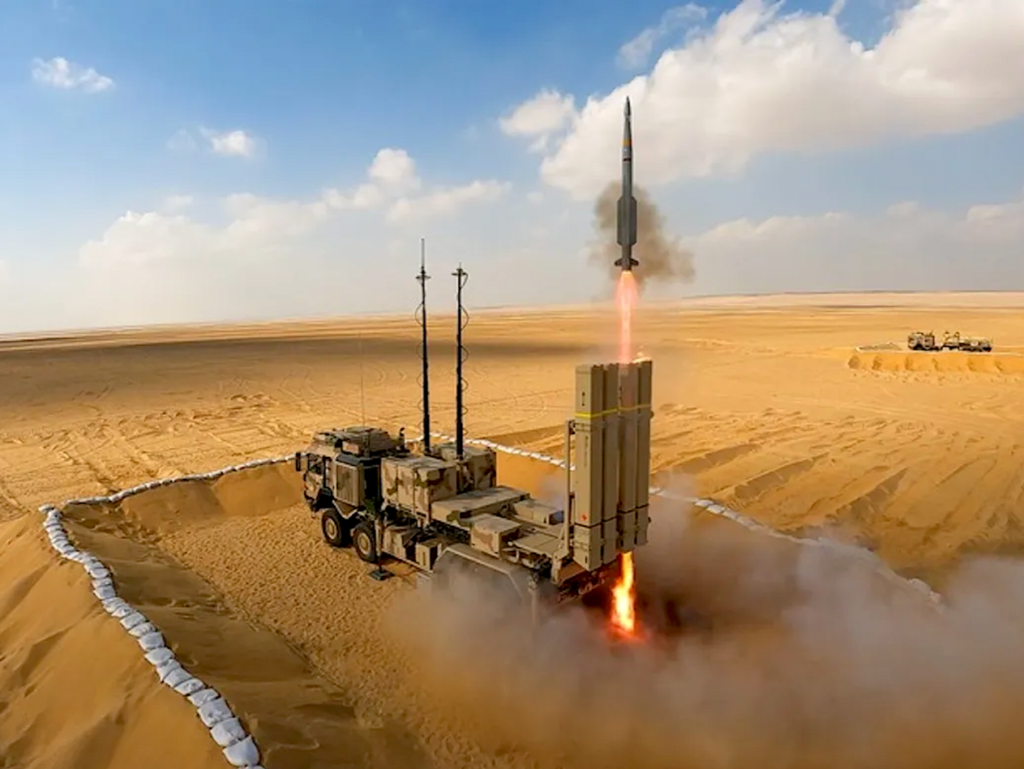
– Germany’s naval forces are bracing for heightened tensions in the Baltic and North Sea. At the heart of this upgrade are four massive F126 frigates—cutting-edge warships designed for long-range missions anywhere in the world, ensuring Germany can project power far beyond its home waters. But the real game-changer lies beneath the waves: a groundbreaking fleet of hydrogen-powered submarines, developed in partnership with Norway. These stealthy subs boast virtually unlimited underwater endurance and near-silent operation, giving the Bundesmarine a decisive edge in undersea warfare. Together, these investments signal a major shift—Germany isn’t just preparing to defend its waters; it’s building a navy ready for global challenges.
– While high-profile weapons usually steal the spotlight, Berlin is quietly strengthening the invisible, yet vital infrastructure that wins wars. At the top of the list: a major cyber defence overhaul to fend off continuous Russian and Chinese hacking campaigns, shielding everything from power grids to battlefield communications. Meanwhile, a new dedicated satellite network is in the works to ensure the military can operate securely, even if civilian systems go dark.

The wake-up call of ammunition shortages – which left stocks embarrassingly bare – has sparked a full-scale effort to not just refill warehouses but finally meet NATO’s minimum requirements. And it’s not just about quantity: Lessons from Ukraine have accelerated the rollout of game-changers like HIMARS precision rocket systems, whose devastating impact against Russian forces proved the value of hitting hard – and hitting smart – from long distances away.
Together, these moves reveal a deeper shift: After years of underinvestment, Germany isn’t just patching weaknesses – it’s future-proofing its defences for an era where logistics, digital resilience, and long-range firepower decide who wins the next fight.
| BETWEEN MEMORY AND MILITARY POWER

Meanwhile, public opinion remains conflicted. Many Germans still recoil at the idea of their country playing a more assertive military role, stuck between guilt over the past and a pacifist mindset. Just like former Chancellor Scholz’s government, Friedrich Merz’s administration will also have to walk a tightrope – boosting defence without triggering domestic backlash or alarming neighbours, some of whom are still weary of German militarisation. If you dig a little deeper, particularly among the EU’s smaller states, you’ll find a quiet but unmistakable sense of unease. And for countries with longer memories – the sort where school textbooks still devote chapters to that part of 20th-century history – the idea of a resurgent, heavily armed Germany may not exactly play as “feel-good story” of the year.
Across the European Union, member states are watching all this unfold with a mixture of apprehensive optimism, as well as some nervousness.
France: A cautious welcome, but eyes on the rear view mirror
French President Emmanuel Macron has shown measured praise for Germany’s sudden burst of military ambition, which he has described as “a necessary evolution” for European security. There is though, an unspoken tension beneath the polite communiqués coming from within diplomatic circles in Paris at the thought of Berlin elbowing its way into what France has long considered its natural role as Europe’s de facto defence heavyweight, dating back to the time of General de Gaulle.
Poland: “Finally…but what took you so long”?
Over in Poland, where they’ve been spending billions on tanks and missiles while Germany was still fretting over balanced budgets, the mood seems to be more “it’s about damn time!” Poland, which has been racing ahead with its own massive rearmament (spending nearly 4% of GDP on defence), with plans to field one of NATO’s largest armies, views Germany’s shift as belated but necessary. There’s an undeniable pragmatism at play; Poland knows a stronger German military means a more secure eastern flank – even if old historical nerves still twitch at the thought of Bundeswehr divisions stationed near the Oder-Neisse line again.
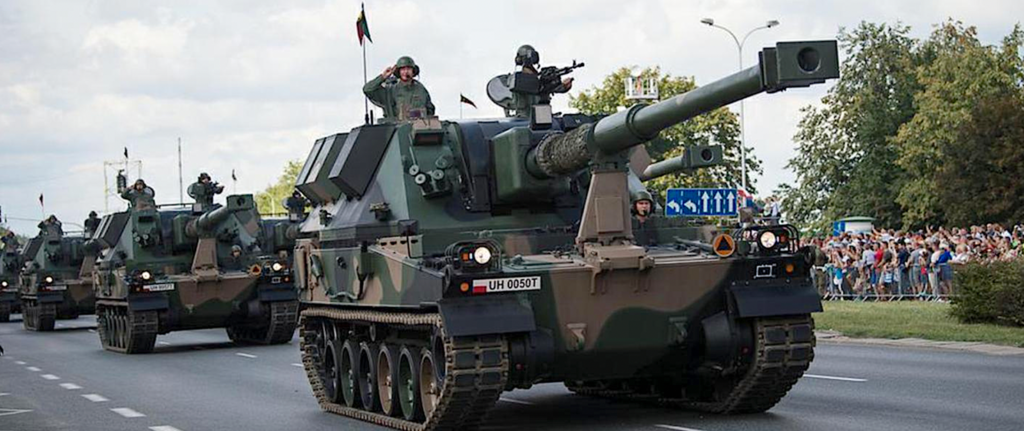
The Nordics & Baltics: Relief, but with reservations
For the Baltic states and Finland, Germany’s decision is broadly seen as a net positive – especially given Russia’s aggression in Ukraine. A consensus is emerging – albeit a somewhat grudging one – that while Germany’s renewed military ambitions are broadly welcome, there must be ironclad assurances this isn’t merely about protecting German interests, but properly committed to the wider European security architecture.
Sweden and Denmark, meanwhile, have reacted with quiet approval, though Stockholm in particular has stressed that any buildup must align with NATO’s broader strategy – not just Berlin’s whims.
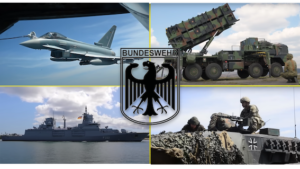
Southern Europe: Scepticism and budgetary envy
In Italy and Spain, reactions have been more muted and tinged with economic realism. It is felt that while Germany is in a position to spend billions on tanks and other armaments, the local populations are still trying to figure out how to pay for basic infrastructure. There’s also a lingering suspicion that Germany’s military revival might come at the expense of EU solidarity funds – diverting money that could otherwise flow southwards.
Austria, Belgium, and the Netherlands: Low-key anxiety
Smaller EU nations with complicated histories vis-à-vis German power are watching with cautious reserve. Austria, which has long prided itself on neutrality, has already issued vague statements about ensuring European security remains cooperative, not competitive.
Belgium and the Netherlands, meanwhile, are caught between welcoming a more robust German contribution to NATO and fretting over what it means for their own influence in Brussels, as they don’t seem to want a Europe where defence policy is dictated solely by Berlin and Paris. Beneath all these reactions lies an uncomfortable truth: Europe has never quite figured out how to feel about German military strength. For older generations, the very word “Bundeswehr” still conjures darker memories. For younger ones, it’s an abstraction – until now. Germany insists this is purely about collective security, not hegemony.
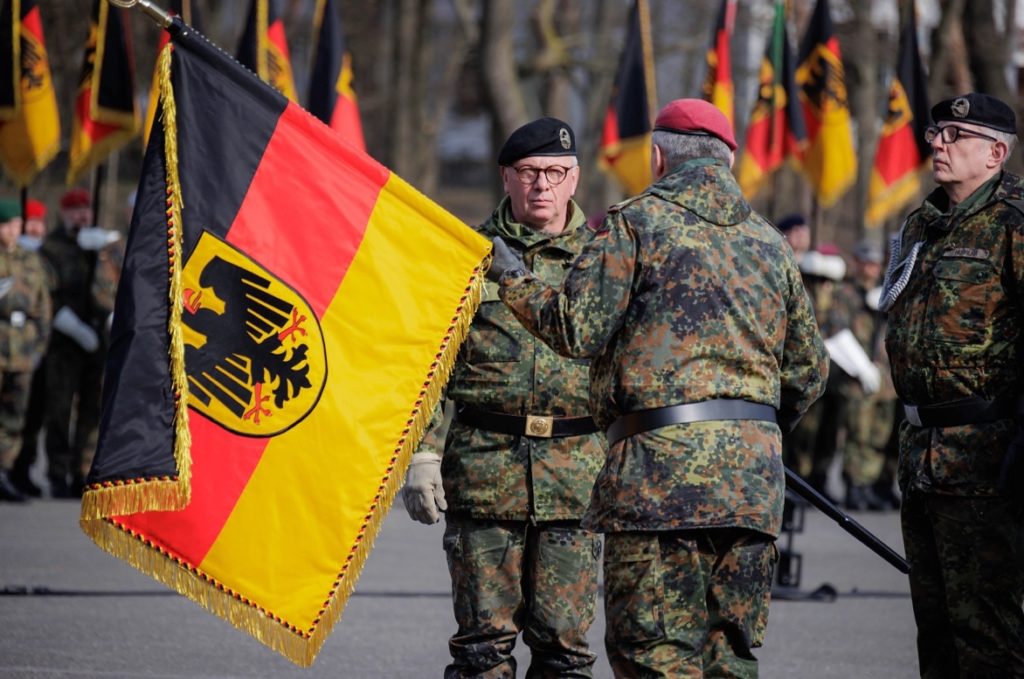
Germany’s big military spending boost can’t be properly understood without looking at the US factor. With Donald Trump repeatedly questioning NATO’s core promises – even suggesting Russia should feel free to attack allies who don’t pay enough – Berlin’s move makes strategic sense. On one level, it’s about modernising equipment; on another, it’s both a safety net against possible US withdrawal and proof Germany is stepping up as a serious ally.
While Chancellor Merz carefully describes this spending as strengthening “shared Western security”, the real message is clear: Europe can’t keep relying on America for its defence forever. The Bundeswehr’s shift from protecting German soil to operating globally shows Berlin understands this new reality.

Whether this will work as planned remains unclear. Merz seems to believe that if Germany builds up its forces, other European nations will follow – creating a stronger, more united defence system. But history shows military expansions often bring unexpected problems. What’s certain is that Germany’s days as a reluctant military player are over. The key questions now are: What sort of military power will Germany become? How will neighbours and rivals react? The answers will shape Europe’s security for generations.
| WAKE-UP CALL FOR THE EU
European Commission President Ursula von der Leyen has put forward a bold new strategy – the “ReArm Europe” initiative – marking a major shift in how the continent approaches its security. In straightforward terms, it’s Europe’s answer to a dangerous world where old assumptions about peace no longer hold.
The timing isn’t accidental. With Russia’s war in Ukraine showing no signs of abating, and growing uncertainty about America’s future commitment to NATO, Ursula von der Leyen argues Europe must finally take full responsibility for its own defence. “The era of European complacency is over,” she recently told reporters in Brussels.
At its core, the plan tackles four key challenges. First, it aims to fix Europe’s chronic underinvestment in defence by coordinating spending across EU nations. Instead of 27 countries each buying slightly different tanks or jets at inflated prices, the Commission wants joint purchases and standardised equipment – an approach that could save billions and actually make forces interoperable.
Second, there’s a major push to ramp up weapons production. The embarrassing ammunition shortages during the Ukraine war exposed how Europe’s defence industry had withered. The plan would fast-track factory expansions, with potential EU funding to boost output of everything from artillery shells to air defence systems.
Technology forms the third pillar. Recognising that modern warfare happens in cyberspace as much as on battlefields, the initiative allocates substantial resources to cyber defences, drone technology and artificial intelligence applications for military use. A particular emphasis is placed on developing European-made solutions to reduce dependence on American or Chinese technology.
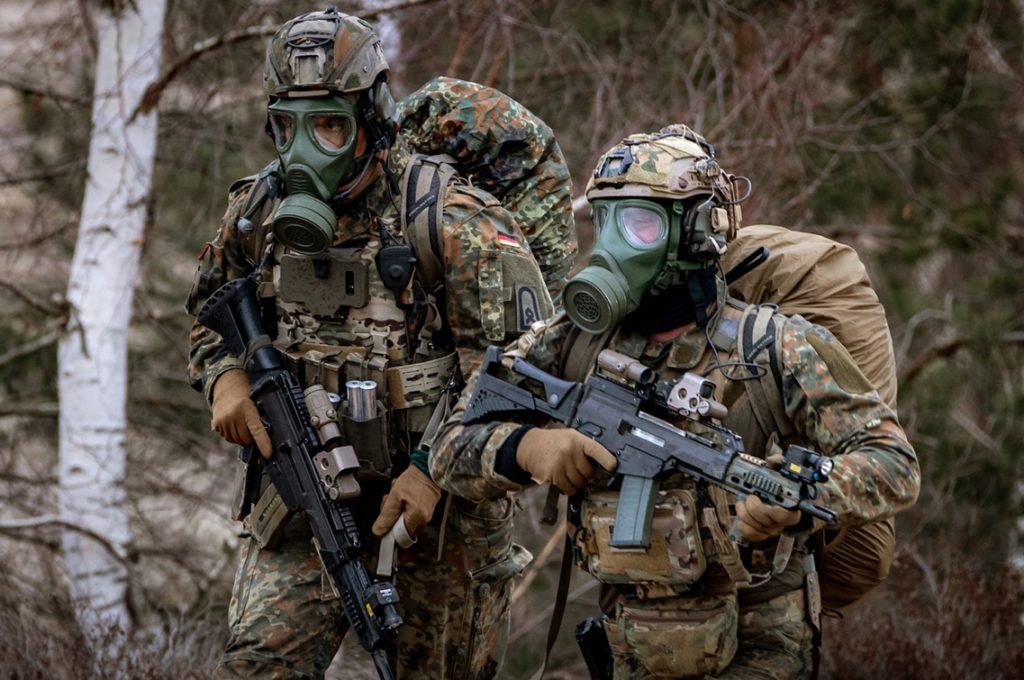
Perhaps most ambitiously, von der Leyen wants to deepen military cooperation between EU members. This includes everything from helping smaller nations modernise their forces to discussing – cautiously – the potential for an EU rapid reaction capability. While careful not to step on NATO’s toes, the Commission clearly envisions a more strategically autonomous Europe.
However, not everyone’s convinced. Some Eastern European countries worry this might dilute NATO’s importance, while cost-conscious critics question where the money will come from. Meanwhile, major arms manufacturers such as Germany’s Rheinmetall and Diehl Defence, France’s Dassault Aviation and Thales, the UK’s Rolls Royce and BAE Systems, Sweden’s Saab, Italy’s Leonardo and Spain’s Navantia, are jostling to protect their national turf. And with von der Leyen making this a personal priority in her second term, and events in Ukraine providing daily reminders of what’s at stake, the political winds are blowing in the plan’s favour.
As one senior diplomat put it: ‘This isn’t about militarising Europe – it’s about ensuring we still have a Europe to defend.’ The coming months will show whether member states can turn this vision into reality, or whether old habits of division prove too strong to overcome.
But Europe’s defence surge isn’t just about replacing American protection. It also involves preparing for a future where U.S. strategic focus may shift – whether towards the Pacific, with China’s growing influence, or inwards, amid domestic political turbulence. While many dismissed Trump’s remarks about “encouraging” Russian aggression against NATO members as irresponsible rhetoric, European defence officials interpreted them as a sobering reality check. With Washington’s reliability in question, Europe faces renewed pressure to strengthen its own defensive capabilities.

The big question is whether Europe can move fast enough. Defence projects take years, sometimes decades, to give tangible results. Meanwhile, Russia’s war in Ukraine grinds on, and Donald Trump is well and truly into his second term. Europe’s sudden rush to boost its defences is a good first step – but let’s be honest – speed alone won’t solve years of neglect and disorganisation. The truth is, Europe still doesn’t have the teamwork, production power, or united leadership to truly go it alone.
In a press statement released ahead of the European Council meeting in March, this is what the Commission President had to say: ‘We are living in the most momentous and dangerous of times. I do not need to describe the grave nature of the threats that we face. Or the devastating consequences that we will have to endure if those threats would come to pass. Because the question is no longer whether Europe’s security is threatened in a very real way. Or whether Europe should shoulder more of the responsibility for its own security. In truth, we have long known the answers to those questions. The real question in front of us is whether Europe is prepared to act as decisively as the situation dictates’. And in her concluding remarks, she added: ‘Europe is ready to assume its responsibilities. Rearm Europe could mobilise close to €800 billion for a safe and resilient Europe. We will continue working closely with our partners in NATO. This is a moment for Europe. And we are ready to step up’.
Germany’s role in this drama is particularly ironic though. After spending the better part of a century trying to downplay its military power, it now finds itself thrust into a leadership role it never wanted. Whether Berlin can rise to the occasion – without stumbling over its own hesitations – will determine not just Germany’s future, but Europe’s as well. One thing is for sure: the days of free-riding on American security are over. Europe must now learn to defend itself, ready or not.
hossein.sadre@europe-diplomatic.eu

